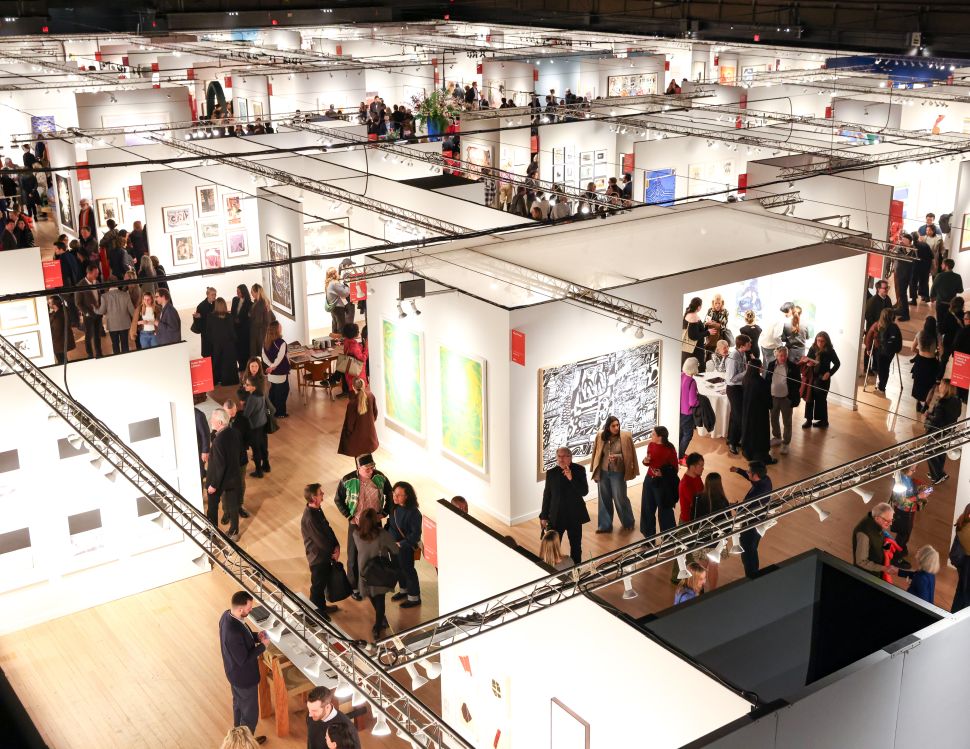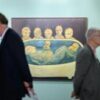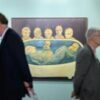
You’ve probably seen the dire headlines about the art market’s decline. Many outlets, including CNN, Bloomberg and the New York Times, have all cited the same grim stat: global art sales dropped by 12 percent in 2024. Each of them dutifully ticked off “geopolitical tensions, economic volatility and trade fragmentation” as the drivers behind what’s being cast as a free fall. Yet you don’t have to read further than the second bullet point in the Art Basel and UBS Report 2025 to see a different picture: the art market actually expanded by 3 percent in volume, driven by new buyers entering the market for works priced under $50,000. The share of transactions in this segment increased from 73 percent of the market in 2022 to 85 percent in 2024.
A shift toward the middle market
This surge in sales below $50,000 isn’t limited to small galleries. Among those with annual sales under $1 million, 95 percent of transactions fell in this range. Mid-sized galleries, selling between $1 million and $10 million, reported a similarly strong showing at 74 percent. Even among galleries with sales exceeding $10 million, more than a third (34 percent) of transactions fell below the $50,000 threshold. This horizontal market embrace was on display at the IFPDA (International Fine Print Dealers Association) Print Fair in March, where mega-galleries like Hauser & Wirth, David Zwirner and Pace Prints debuted new editions by artists including Rashid Johnson and Amy Sherald.
The medium itself is also shifting. Paintings—still the most dominant medium by value—saw a five percent dip in market share in 2024. Meanwhile, spending on prints and multiples, most of which are priced under $50,000, saw a 3 percent increase, reaching a market share of 7 percent. Not all works on paper performed equally, though, as photography sales remained flat with a total market share of just 3 percent.
This is more than a silver lining, not just because of the growth in the print and edition market, but also for what it signals about the structural health of the market. To be sure, some of the action is happening at the top of the market among established collectors. According to the Art Basel and UBS report, prints and multiples now represent 24 percent of high net worth collectors’ holdings, an increase of 16 percent over the previous year. These works are now the second-largest category of their spending, accounting for 18 percent of their total art expenditure. However, the real growth is among new collectors entering the market.

A new generation enters the market
Among dealers surveyed by Art Basel and UBS, 44 percent of all buyers in 2024 were new to the market. This trend was especially visible at the IFPDA Print Fair, where opening night lines wrapped around the block and attendance exceeded 21,000. More than half (52 percent) of attendees self-identified as “new to the fair.” Among exhibitors, 96 percent said that the number of new clients exceeded their expectations, up from 81 percent the previous year and 82 percent reported that their sales at the fair met or exceeded their expectations.
Who are these new buyers? Much of the excitement stems from the long-anticipated “Great Wealth Transfer.” The crowd at the fair was empirically younger than ever before, and digital platforms have proven effective at marketing prints and editions to this audience. Gen Z—digital natives raised on NFTs, sneaker drops and limited release culture—are comfortable with the language of editions and spending more on them than any other age group.
Gen Z is forging its own path, bypassing traditional auction houses in favor of more direct and transparent ways of buying art, including acquiring prints directly from the fine art print publishers who work collaboratively with the artists. Studios like Durham Press, Jungle Press, Lower East Side Print Shop, ULAE, Tandem Press, Two Palms, Burnet Editions, BORCH Editions, Crown Point Press and Pace Prints offer direct access that appeals to a generation wary of the traditional gallery system. This also means that Gen Z art collectors are not well represented in art sales indices like the Sotheby’s Mei Moses Index, which track only auction prices. A study from My Art Broker found that 78 percent of Gen Z buyers would never buy prints at auction.
Why prints and editions are a smart buy
As this influx of new buyers shows, it’s a good time to collect prints and editions. The price point for prints and editions tends to be less volatile than other segments of the art market. Pricing for editions tends to be consistent, with gentle-curve trajectories that are stewarded by the galleries and fine art print publishers to build long-term, sustainable careers for their artists. Plus, it can be a way of acquiring an original work by otherwise unobtainable artists like James Turrell, Frank Stella, Jeff Koons and Rembrandt.
If you are thinking of dipping a toe into the market, here are some pointers.
- All fine art prints are original works of art. Many are unique, such as monotypes, in which the artist draws or paints an image directly onto a printing surface (called a matrix), which is then transferred to paper or canvas, resulting in a singular, non-reproducible print.
- You don’t need to be an expert. Buying from a member of a professionally vetted group like the IFPDA ensures quality. Members are strictly vetted and adhere to the IFPDA’s Code of Ethics.
- Edition size matters. The concept of limited editions originated at the turn of the 20th century. Before that, the number of prints made was determined by how many impressions could be taken from the matrix (usually a copper plate or wood block) before it broke down. For this reason, we typically refer to pre-modern works as prints and contemporary works as editions, with smaller edition sizes (typically one to 50) often correlating to a higher price point.
- Artist reputation is key. The reputation of the artist is one of the single most important factors contributing to value. Strong and recognizable work by blue-chip artists like Picasso, Warhol, Goya, Durer, Rembrandt, Hockney, and the like tends to be more resilient in a down market. For contemporary artists, representation by an established or “mega-gallery” can be a good predictor of future value. With Old Master prints, in addition to the artist, the quality of the impression, condition and provenance are critical.
Speaking of Old Masters, the Art Basel and UBS Report cited a reversal of recent trends, with sales in some sectors of modern and Old Master works performing better than contemporary, with higher prices concentrated on the most established artists. At the IFPDA Print Fair, dealers reported strong sales of prints by modern and 20th-century artists such as Picasso, Dubuffet, Miro, and Chagall to Gen X and Millennial buyers, suggesting that historical works are also benefiting from this generational shift.
So, is the art market contracting? Not so much. The stratosphere might be missing those formerly frothy oligarch prices, but new buyers, armed with digital fluency, market savvy and real purchasing power, are entering the market with enthusiasm. Hang out at the next IFPDA Print Fair, and you’ll see them in action.
This post was originally published on this site be sure to check out more of their content





